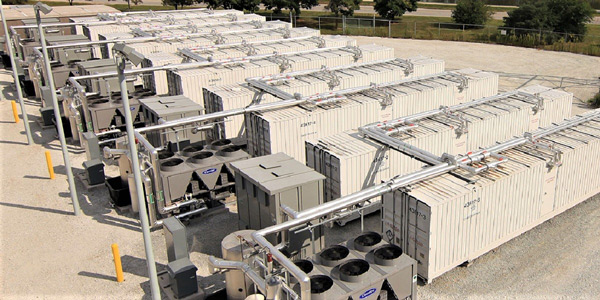By Amanda Durish Cook
MISO is nearing its goal of an October FERC filing to solidify its first, limited set of storage-as-transmission assets (SATA) rules.
“There’s a number of complicated issues, and we can’t make promises … but I think we’re making good progress,” MISO Director of Planning Jeff Webb said of the filing target during an update at a Reliability Subcommittee meeting Thursday.
Webb said MISO staff are currently drawing up Business Practices Manuals to pair with its Tariff filing so the rules can be implemented soon after approval.
The RTO is also promising another, more comprehensive set of SATA rules in the future that would allow for concurrent use of resources as both transmission and generation.
One Wisconsin battery project is so far striving for SATA treatment in MISO’s 2019 Transmission Expansion Plan (MTEP 19). (See MTEP 19 Could Yield First MISO SATA Project.)
Webb said owners of storage projects selected in the MTEP will enter into transmission owner agreements and become registered TOs, if they aren’t already.
MISO is holding firm that it’s not yet ready for storage that can simultaneously provide transmission services and offer into the energy market.
“It’s rather more complicated when it’s earning two revenue streams,” Webb said.
He also said MISO considers the discussion closed on DTE Energy’s proposal to allow non-TOs to own and operate SATA. (See MISO Limits Storage as Transmission Asset Ownership.)
But Webb also called MISO’s filing a “placeholder” for a more exhaustive approach that allows electric storage to function as both transmission and energy. For now, though, the aim is to “keep it simple,” prohibiting SATA from participating in markets, thus drawing a line between how storage is treated under FERC Order 841 and how it will be considered as transmission in the MTEP study process.
“We’re trying to get to a place where, yes, you may have a battery in MTEP … and be able to also earn market revenues,” Webb told stakeholders. “We fully expect that will be the end result.”
WEC Energy Group’s Chris Plante asked how MISO will account for the limited, three to four hours of discharge that batteries can provide in reliability planning.
Webb said the duration of storage discharge will be a key consideration in the transmission planning process.
“If we don’t have the confidence that a storage device can ride through a peak load period, we just wouldn’t pick it,” Webb explained.
Customized Energy Solutions’ David Sapper said he still wasn’t convinced that a storage device managing transmission constraints won’t have impacts on the energy market.
“It is important to establish what it should and shouldn’t be used for,” Webb responded.
MISO will hold final stakeholder discussions on its SATA filing at Planning Advisory Committee meetings on Aug. 14 and Sept. 25.






